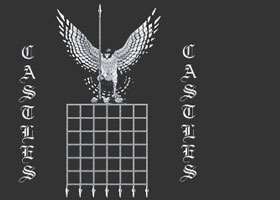Later a piece of armor called a vamplate which was a round of iron on the shaft of the lance which was designed to protect the hand and arm. During jousts at Tournaments the head of a lance was fitted with a Coronal instead of the sharp point used for war. Medieval LanceMedieval Lance - Medieval Lance - The History
- Facts and Information on the Lance
- Medieval Lance - Description and sizes
- Medieval Lance - Training and the Quintain
- The Lances place in tournaments
- "running at the ring." in practice
Training to use the Medieval Lance
Skill in using Medieval weapons, including the lance, were necessary for every Medieval Knight. A Knight was trained first as a Page from the age of 7 to 14 and then as Squire from the age of 14 to 21. A Knight was therefore usually the age of 21 before would make a formal entry into Knighthood. It was the duty of a Knight to learn how to fight, become accomplished at using weapons such as the lance, and so serve their Lord according to the Code of Chivalry. Almost 14 years of training enabled the knight in the skills of horsemanship and to use the lance with considerable strength and skill. Training - The Quintain
Skill in using Medieval weapons was dependent on weapon practise. The Quintain was used for training in the use of the Medieval Lance. A Page would start to acquire the skills required of a Knight by practising the skills of tilting a lance against the quintain. At first a target was erected and the Page would mount a wooden 'horse' on wheels holding a lance. The wooden horse would be pulled along by two other pages towards the target and the page would aim the lance. A quintain enabled target practise with a lance. This idea was 'borrowed' from the Romans. As the apprentice Knights acquired the skills of horsemanship they would practise against a shield and dummy which were suspended from a swinging pole. The shield was hit by a charging squire and his objective was to avoid the rotating arms and not get knocked from the saddle. Training to use the Medieval Lance - The Ring
Another form of lance practise was called "running at the ring." The objective of this lance training were to develop accuracy in hitting the target. This consisted of attempting to spear a small target, such as a ring or whilst riding at a fast canter or gallop. Medieval Lance
Facts and information about the history of the Medieval lance and how Knights were trained to use this weapon! The weapons used by the Medieval Knights - Swords - Broadsword, Falchion, Bastardsword, Cutting sword and the Greatsword. The weapons used by the armed men and archers included the Crossbow, The Longbow, The Battle Axe, The Poleaxe and Pikes | 
